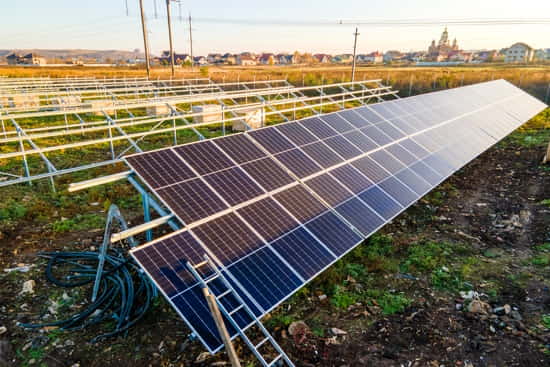Sustainable Procurement: A Comprehensive Guide
Introduction to Sustainable Procurement in Construction Industry
As more businesses prioritize sustainability, sustainable procurement has become a crucial aspect of supply chain management. It refers to the process of purchasing goods and services in a way that reduces negative social, environmental, and economic impacts. In this article, we’ll cover everything you need to know about sustainable procurement, from its benefits to best practices.
In construction, it addresses three (3) problems that are sometimes neglected by organizations. It can minimize the damage to the environment, maintain and generate benefits that are economical to the organization itself when meeting their requirement for materials and services work. It can be considered as a natural extension of the sustainability concept. It is a balanced and enduring approach to social Progress, environmental responsibility, and economic activity.
In other terms, t is about making the purchase for the goods or services that are really needed. Goods or services that are used by concept of sustainable procurement ensure that production, use, and disposal encourage positive outcomes for Society, Economy, and Environment and minimize its negative impacts.
The aim of it is to also minimize the exploitation of non-renewable sources. In construction, sustainable procurements are involved in the use of non-renewable materials, service deliveries, the use of the building and its operations, the maintenance and repairing of building, the disposal of waste material, recycling and reusing the demolished waste, and in the designing process of the structure.
What is sustainable procurement?
It is a process that prioritizes the social, environmental, and economic impacts of purchasing decisions. It involves considering the entire lifecycle of products and services, from raw materials to disposal, and choosing suppliers and vendors that prioritize sustainable practices.
Why is sustainable procurement important?
It is important because it aligns business practices with sustainability goals, reduces negative environmental impacts, and promotes social responsibility. By prioritizing it, businesses can reduce their carbon footprint, conserve natural resources, and support local communities. It also provides a competitive advantage and enhances brand reputation.
Sustainable procurement vs traditional procurement
Traditional procurement focuses solely on cost and quality, while sustainable procurement considers environmental and social impacts in addition to cost and quality. It is a more holistic approach that considers the long-term impacts of purchasing decisions, while traditional procurement is often driven by short-term goals.
Key principles
The key principles of sustainable procurement include:
- Environmental responsibility
- Social responsibility
- Economic viability
- Innovation and collaboration
- Transparency and accountability
- Lifecycle thinking
Strategies
There are several strategies that businesses can use to implement sustainable procurement, including:
- Supplier assessments and evaluations
- Green procurement policies and guidelines
- Supply chain mapping and transparency
- Local sourcing and community partnerships
- Waste reduction and circular economy practices
- Ethical labor and human rights practices
Challenges
Some of the challenges of sustainable procurement include:
- Limited supplier options for sustainable products and services
- Lack of stakeholder buy-in and support
- Higher upfront costs for sustainable products and services
- Complex supply chains with limited visibility
- Difficulty in measuring and reporting sustainable procurement performance
Measuring sustainable procurement performance
Measuring sustainable procurement performance is important to track progress and identify areas for improvement. Key performance indicators (KPIs) can include:
- Percentage of spend on sustainable products and services
- Carbon footprint reduction
- Waste reduction
- Supplier sustainability performance ratings
- Employee engagement in sustainable procurement practices
Best practices
Some best practices for sustainable procurement include:
- Establishing clear sustainability goals and objectives
- Engaging stakeholders and suppliers in sustainable procurement practices
- Implementing a green procurement policy and guidelines
- Conducting supplier assessments and evaluations
- Prioritizing sustainable products and services in purchasing decisions
- Measuring and reporting performance
Advantages
There are various advantages of Sustainable Procurements in the Construction Sector:
- It ensures more effective and efficient use of Natural Resources available.
- Makes people aware of its social and environmental responsibility.
- Can provide encouragement by incentives to the sustainable product market.
- It encourages innovation in the supply chain.
- Helps minimize the impact of hazardous materials.
- Helps to minimize pollution and waste.
- Cost savings through reduced waste, energy use, and material consumption
- Improved brand reputation and increased customer loyalty
- Reduced environmental impact, such as greenhouse gas emissions and pollution
- Enhanced social responsibility and positive community impact
- Increased innovation and collaboration with suppliers
- Improved supply chain transparency and risk management
Implementations of Sustainable Procurements in Construction
Implementing sustainable procurement is a difficult part but government or private organizations are embracing this idea and working to make this a reality because of its advantages. However, It can be achieved by the effective policies of the organizations. Policies to be effective should permeate into all levels of the organization and its deployment is ensured through procurement processes. The process includes the business needs of the organization, the identification of suppliers, and the sourcing strategy. In construction industry, recent examples of sustainable procurement can encourage in making green buildings and making plastic roads composited with other materials. Green building materials come from the waste of other industries that are recycled or used in green buildings, it becomes economical and is beneficial to the environment, and aligns with social responsibility.So is true with the plastic roads and as technological advancement happens in the near future we’ll come up with processes that are more economical than the existing ones to use and recycle the waste.

Conclusion
It can bring green initiatives in the supply chain of the construction material. This can help the industry to reduce the Carbon footprint and at the same time, it will help in waste management.





